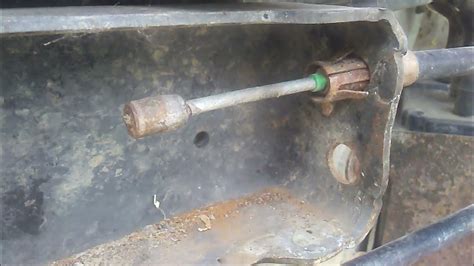How to Remove an Emergency Brake Cable: A Step-by-Step Tutorial
Replacing a broken or frayed emergency brake cable is a relatively straightforward repair that can often be tackled by a reasonably handy individual. However, it's crucial to understand the specifics of your vehicle's braking system before beginning. This guide provides a general overview; always consult your vehicle's repair manual for precise instructions and safety precautions. Improperly handling your braking system can be extremely dangerous.
Disclaimer: This tutorial provides general guidance. The specific steps may vary depending on your vehicle's make, model, and year. Incorrectly performing this repair could lead to brake failure, resulting in serious injury or death. If you're unsure about any step, consult a qualified mechanic.
Why Would You Need to Remove an Emergency Brake Cable?
Several reasons might necessitate removing your emergency brake cable:
- Cable Failure: A frayed, broken, or seized cable prevents the emergency brake from engaging properly.
- Brake System Repair: Access to other brake components might require removing the emergency brake cable.
- Cable Replacement: An old or damaged cable needs replacing to ensure the reliable function of your emergency brake.
- Upgrade or Modification: You might be installing an aftermarket emergency brake system.
Tools You Will Likely Need
Before you start, gather the necessary tools. This list is a general guideline; you might need additional tools depending on your vehicle:
- Jack and Jack Stands: Safely raise and support your vehicle.
- Wheel Chocks: Secure the wheels that remain on the ground.
- Wrench Set: Various sizes to remove nuts and bolts.
- Socket Set: Useful for reaching tight spaces.
- Pliers: For gripping and manipulating cables.
- Ratchet: To speed up the process of loosening and tightening fasteners.
- Penetrating Oil (PB Blaster or similar): To loosen rusted or seized components.
- New Emergency Brake Cable (if replacing): Make sure you purchase the correct cable for your vehicle.
- Gloves: Protect your hands.
- Vehicle Repair Manual: Your specific vehicle's manual is invaluable.
Step-by-Step Guide to Removing an Emergency Brake Cable
This is a general guide and may not apply to all vehicles.
-
Safety First: Park your vehicle on a level surface, engage the parking brake (if possible), and chock the wheels that remain on the ground. Raise the vehicle using a jack and secure it safely with jack stands.
-
Locate the Cable: Consult your vehicle's repair manual to identify the emergency brake cable's location. It typically runs from the emergency brake lever inside the vehicle to the rear brake calipers or drum mechanisms.
-
Access the Cable Connections: You'll likely need to remove wheel(s) to gain access to the cable connections at the rear of the vehicle.
-
Disconnect the Cable: Carefully disconnect the cable from the brake caliper or drum mechanism. This usually involves loosening nuts or bolts securing the cable. Penetrating oil might be necessary to loosen rusted parts.
-
Remove the Cable from the Vehicle: Once disconnected, carefully guide the cable out of its routing. Take note of how it's routed, as you'll need to reverse this process when installing a new cable.
-
Inspect the Cable: If you are only removing the cable temporarily, inspect it for damage. If replacing the cable, install the new cable following the reverse steps, ensuring it's correctly routed and securely connected.
-
Reassemble: Lower the vehicle, reattach the wheels, and test the emergency brake to ensure proper function.
Frequently Asked Questions (FAQs)
How difficult is it to remove an emergency brake cable?
The difficulty varies depending on your vehicle and mechanical experience. For some vehicles, it's a relatively simple task; for others, it might require more specialized tools or knowledge.
Can I drive my car without an emergency brake cable?
Driving without a functioning emergency brake is extremely dangerous and illegal in most places. The emergency brake is a crucial safety feature.
What happens if my emergency brake cable breaks?
If your emergency brake cable breaks, your emergency brake will not function, leaving you with a significantly reduced level of braking control in emergencies.
How much does it cost to replace an emergency brake cable?
The cost varies depending on the vehicle and labor charges. The cable itself is relatively inexpensive, but labor costs can significantly increase the overall expense.
Can I replace just the cable, or do I need to replace other parts?
Usually, only the cable needs replacing if it's broken or frayed. However, if other parts of the braking system are damaged or worn, they should be replaced as well to ensure optimal safety.
Remember, safety is paramount. If you are uncomfortable performing this repair yourself, always seek the assistance of a qualified mechanic. This tutorial is for informational purposes only and does not constitute professional automotive advice.

